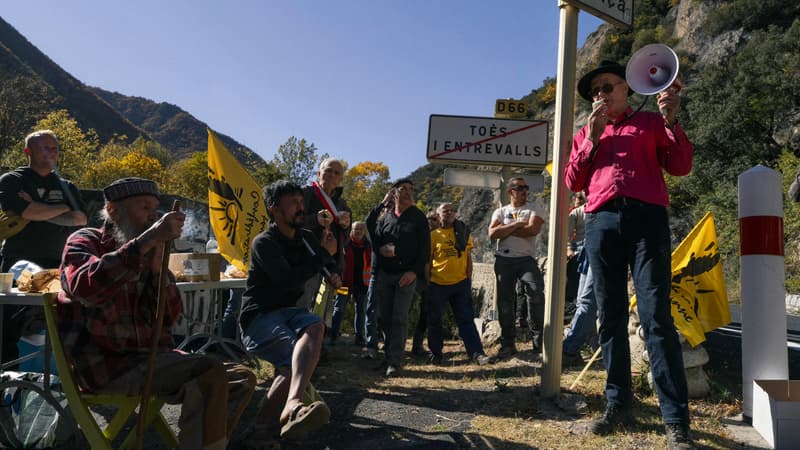A hundred protesters tried, this Monday, November 3, to oppose the slaughter, in the Pyrénées-Orientales, of some 80 head of cattle in the context of the fight against lumpy skin disease (LCD), before being evicted by the gendarmes, an AFP photographer noted.
About 2,700 animals have been slaughtered since the disease appeared in the country in June, including 250 in this department, the Ministry of Agriculture reported Monday during a progress update. In total, 96 outbreaks were recorded, 10 of them in the Eastern Pyrenees, in 64 farms.
The government’s strategy, which provides for the total depopulation of families with one or more sick animals, is highly questioned by the Rural Coordination and the Peasant Confederation, agricultural unions that had already tried to block sacrifices in the Alps this summer.
A “state crime”
“We decided to form this collective to give support and give voice to citizens in this carnage,” Jean Quilleret, a member of the Stop the Massacre committee that originated Monday’s demonstration, told AFP.
For him, who considers that “a large number of sick animals manage to recover,” the strategy of sacrificing contaminated individuals is a “state crime.” About fifty gendarmes evacuated him along with the other protesters.
“I could not allow a blockade to take place because it would have had the consequence of allowing the spread of the disease,” the prefect of the Pyrénées-Orientales, Pierre Régnault de la Mothe, told AFP, adding that he had not come “with joy” to this place of “necessary” sacrifice.
Four protesters were arrested and later released, and one was slightly injured in the shoulder during this mobilization in Thuès-Entre-Valls, said the prefect.
The protesters had tried to block a first slaughter on Monday morning in the neighboring town of Fontpédrouse, but, being too few, they could not prevent the arrival of veterinary services, according to an AFP photographer. “I realize it is heartbreaking,” the prefect confided.
“Several million euros”
“Eradicating the disease is an achievable objective,” he estimated, through the sacrifice of livestock contaminated or in contact with the disease, vaccination – whose rate in the Pyrenees-Orientales currently reaches 90% according to the prefect – and restrictions on the movement of animals.
The ministry indicated on Monday that more than a million head of cattle from a French herd of 15.7 million head were in the process of being vaccinated in the areas near the contaminated outbreaks, at a cost of “several million euros” borne by the State.
Some three million euros have already been paid in advance to farmers who had to slaughter their herds, but the total cost of the epidemic is currently difficult to quantify.
In addition to compensation for slaughter and psychological support, breeders are asking for help to cover production losses caused by the restrictions and, in particular, the 15-day ban on exporting live animals.
The measure, which ended on Saturday, was aimed at limiting the spread of the disease in other countries, although the main buyers of French animals, Italy and Spain, have registered cases on their territory.
On Monday, the ministry indicated that Italy had agreed, under “drastic” conditions, to receive vaccinated animals in restricted areas of France. Talks are being held with Spain, which has also suspended trade with other countries.
Source: BFM TV


